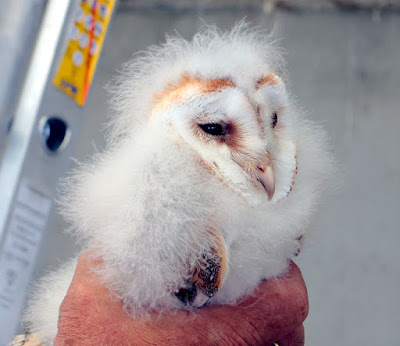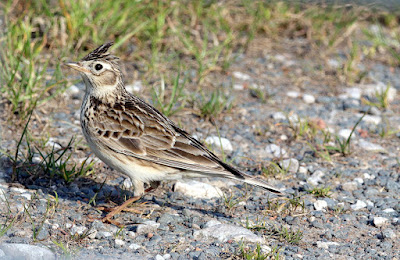There was a stiff north-easterly wind as I set off over the moss roads. It had been three weeks without birding the local patch so I was keen to see what had taken place in this “silent spring”. Via the Internet I’d read local blogs and bird club pages where all agreed that a number of species were down or even missing – Whitethroats, Sedge Warblers, Swallows, Swifts, House Martins and Reed Warblers; the same names kept cropping up on the list of absentees.
Until this morning I’d not seen a Swift in the UK, just several thousand in Menorca over a week ago. It was almost 1030 this morning before I saw my first 2 UK Swifts of the year, both heading purposefully into the wind and out over Morecambe Bay.
The early start gave a number of Whitethroats, both singing but also skulking as they do. Maybe they are just trying to catch up with the days they lost on the way here? But less than a dozen Whitethroats for almost four hours of birding in suitable habitat represents a poor show.
Whitethroat
At least the recent dry days gave farmers a chance to catch up and for now the flash floods are gone. Many a field is ploughed & seeded or stripped bare by the first cut of silage.
Rawcliffe Moss, Lancashire
The moss roads produced an interesting mix. I checked out the Buzzard nest of some weeks ago where the foliage now almost completely hides the nest. The two adults were very close by but silent and I’m pretty sure there are small young up there in the tree tops.
Buzzard Nest
Buzzard
Close by was a singing Lesser Whitethroat, a Kestrel and on nearby fields, 6 Stock Dove. There was a Curlew displaying too, an upland breeding species that nests in very low numbers here on the coast.
An hour or two around the Cockerham, Conder Green and Cockersands area proved to be inconclusive. I saw lots of Sand Martins at Cockerham but Swallows and House Martins were noticeable by their low numbers, even absent from regular spots along Moss Lane.
In this part of Lancashire our Swallows have suffered a series of poor, short summers of rain, cool temperatures and the loss of many traditional nesting sites. The cumulative effect of these changes is that two or three broods have not been possible in a season and there are less young available to fly to Africa in the autumn. The additional pressures of the Swallows’ long and hazardous migration mean that the numbers of Swallows returning to breed in our Northern summer declines each year. Swallows are stuck in a vicious circle from which they struggle to escape.
I managed to see and hear about six Sedge Warblers, plus a handful of Whitethroat but not a single Reed Warbler in the phragmites ditches alongside the lanes. I'm hoping the lack of visuals of both Reed and Sedge Warblers is down to a late start and the females laying low while on eggs.
Sedge Warbler
Brown Hares have done well this year where perhaps the farmers’ reluctance to enter their fields in the wet spring helped hares progress. Skylarks may have benefited in a similar way and it was a very visible but not necessarily vocal species this morning with a good number seen along Jeremy and Moss lanes. Skylarks too are mostly at egg stage in late May and I didn't see any carrying food today.
Brown Hare
Skylark
Along Moss Lane I saw two broods of young Lapwings, adults with three good sized chicks and then adults with but a single youngster. Sadly I also saw the beginnings of a post-breeding season gathering of 15-18 adults whereby both failed or non-breeders join together in a loose flock to compare notes and discuss what they might do different next time.
Lapwing
There’s good news from Conder Green where a second pair of Common Terns have claimed the island spot vacated by the Avocets of early May that upped sticks and went elsewhere. The other pair of terns still claim the man-made pontoon.
Common Tern
Also here – 5 pairs of Oystercatcher, 3 pairs of Tufted Duck and 2 pairs of Redshank.
















































































